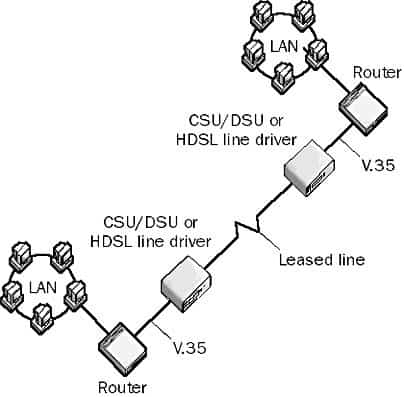HDLC, or High-level Data Link Control, is a standard synchronous communication protocol at the data-link layer of the Open Systems Interconnection reference model that is used for wide area network synchronous serial connections over leased lines.
What is HDLC (High-level Data Link Control)?
A standard synchronous communication protocol at the data-link layer (layer 2) of the 7 layer OSI model that is used for wide area network (WAN) synchronous serial connections over leased lines.
High-level Data Link Control (HDLC) was derived from Synchronous Data Link Control (SDLC) and was developed by the International Organization for Standardization (ISO) for point-to-point communication. It was later adapted by the International Telecommunication Union (ITU) for X.25 Link Access protocol.
How it works
HDLC defines a method for encapsulating or formatting data into frames for synchronous transmission over synchronous serial WAN links to remote sites. HDLC is a bit-stream protocol (bit streams are not broken into individual characters) that uses a 32-bit checksum for error correction and supports full-duplex communication. HDLC frames consist of a flag byte followed by address and control information, data bits, and a CRC byte. A control field at the start of a frame is used for establishing and terminating data link connections.
An HDLC link consists of a primary station and a secondary station, with the primary station issuing the commands and the secondary station issuing the responses. Like another layer 2 WAN protocol called Point-to-Point Protocol (PPP), HDLC is used mainly for point-to-point communication, in contrast to other layer 2 WAN protocols such as Asynchronous Transfer Mode (ATM), frame relay, and X.25, which are used for both point-to-point and point-to-multipoint communication. Because HDLC is used mainly in point-to-point communication, it does not need to have addressing implemented at the data-link layer because the local and remote stations are connected directly.

In this configuration, either one station is the primary and the other the secondary (unbalanced point-to-point link) or both stations function in a primary/secondary capacity (balanced point-to-point link). You can also use HDLC in a more complex configuration in which one primary links to several secondaries (unbalanced multipoint configuration).
HDLC is commonly used in leased-line connections in which the WAN link’s endpoints are terminated with CSU/DSUs (Channel Service Unit/Data Service Units) connected to Cisco routers running Internetwork Operating System (IOS). Routers and access servers from other vendors often use PPP instead of HDLC.
NOTE
HDLC was developed by the ISO as an offshoot of the SDLC protocol, which IBM developed in the 1970s as part of its Systems Network Architecture (SNA) mainframe computing environment.